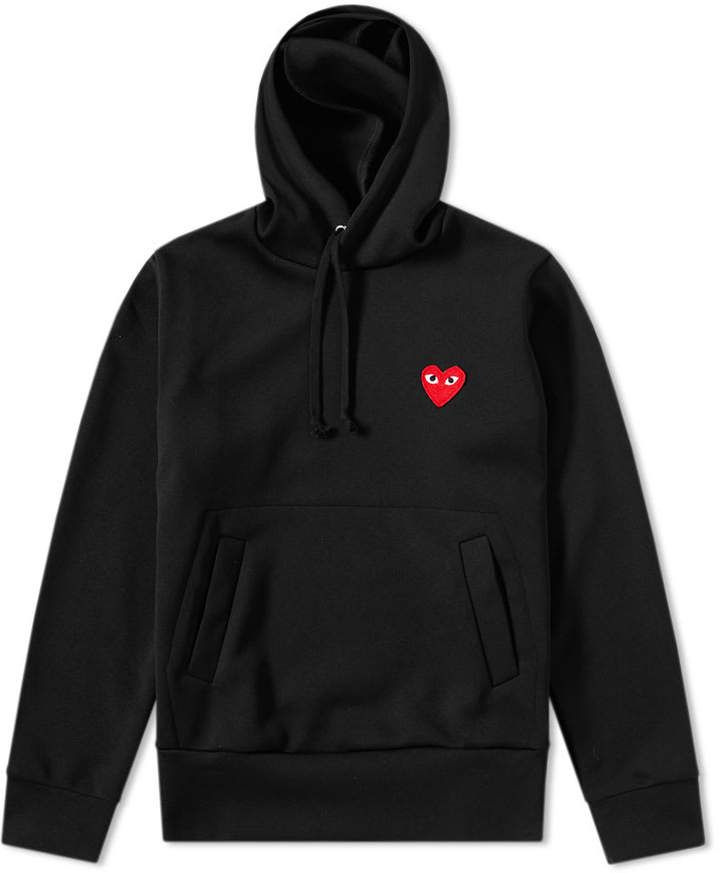Comme des Garçons: The Avant-Garde Fashion Revolution

Strong8k brings an ultra-HD IPTV experience to your living room and your pocket.
Comme des Garçons, often called CDG, is a Japanese fashion label founded by designer Rei Kawakubo in 1969. It has since become one of the most influential and pioneering brands in the fashion world, known for its unconventional design approach, breaking traditional fashion's boundaries. CDG embodies avant-garde aesthetics, pushing the limits of creativity and challenging societal norms through its distinctive and often controversial designs.
The Origins and Philosophy of Comme des Garçons
Rei Kawakubo, a visionary and a disruptor in the fashion industry, started Comme des Garçons in Tokyo to create designs that defied Western fashion norms. In an industry dominated by trends and commercial appeal, Kawakubo sought to design clothing that was not only functional but also an expression of art and individuality. The brand's name, "Comme des Garçons," translates to "like boys" in French, reflecting Kawakubo’s initial focus on androgynous and gender-neutral designs.
CDG’s early collections were characterized by their monochromatic color palette, predominantly using black, white, and grey. Kawakubo’s designs often feature asymmetry, deconstruction, and oversized silhouettes, breaking away from the conventional notions of beauty and femininity in fashion. This rejection of mainstream ideals quickly earned her a reputation as a radical designer, and CDG became a symbol of rebellion and innovation in the fashion world.
Breaking into the Global Fashion Scene
In 1981, Comme des Garçons made its debut in Paris, where Kawakubo presented a collection that shocked and intrigued the fashion community. The collection, featuring torn fabrics, raw edges, and oversized, draped silhouettes, was a stark contrast to the sleek and glamorous designs that dominated Paris Fashion Week at the time. Critics dubbed the collection “Hiroshima chic” due to its dark and distressed aesthetic, but it also marked the beginning of CDG’s global recognition as a brand that pushed the envelope in fashion design.
CDG’s entrance into the international fashion scene was a turning point for both the brand and the industry. Kawakubo’s ability to challenge traditional fashion norms resonated with a new generation of consumers who sought individuality and self-expression in their clothing. This led to the brand’s rapid expansion across Europe and the United States, establishing CDG as a global fashion powerhouse.
Signature Collections and Collaborations
Comme des Garçons is not only known for its bold designs but also for its innovative collections that transcend conventional fashion trends. One of the brand’s most iconic collections is the “Lumps and Bumps” line from 1997, where Kawakubo experimented with padded clothing that distorted the human form. This collection exemplified CDG’s ethos of challenging the status quo and questioning the concept of beauty.
In addition to its mainline collections, CDG has launched various sub-labels, each with its own distinct identity. These include Comme des Garçons Homme, Comme des Garçons Play, and Comme des Garçons Noir, among others. Comme des Garçons Play, in particular, has gained widespread popularity for its more accessible, casual designs featuring the iconic heart logo with two eyes, designed by artist Filip Pagowski.
CDG has also collaborated with a wide range of brands, further cementing its status as a fashion pioneer. Collaborations with Nike, Converse, Supreme, and even luxury brands like Louis Vuitton have brought CDG’s avant-garde designs to a broader audience. These collaborations have successfully merged streetwear culture with high fashion, appealing to both fashion enthusiasts and mainstream consumers.
The Legacy and Influence of Comme des Garçons
Rei Kawakubo’s vision for Comme des Garçons has left an indelible mark on the fashion industry. The brand’s commitment to innovation and defiance of traditional beauty standards has inspired countless designers to think outside the box and challenge the norms of fashion. Kawakubo herself was honored with a retrospective exhibition at the Metropolitan Museum of Art’s Costume Institute in 2017, making her the second living designer, after Yves Saint Laurent, to be celebrated in such a way.
CDG’s influence extends beyond the runway. It has played a crucial role in the rise of concept-driven fashion, where clothing serves as a medium for artistic expression and social commentary. The brand’s ability to balance commercial success with creative integrity has made it a cornerstone of the fashion world, appealing to both avant-garde fashion enthusiasts and everyday consumers alike.
Conclusion
Comme des Garçons remains at the forefront of the fashion industry, continually pushing the boundaries of what fashion can be. Through its unique designs, sub-labels, and collaborations, CDG has managed to stay relevant and innovative for over five decades. Whether it's through its avant-garde runway collections or its playful streetwear lines, Comme des Garçons continues to inspire and challenge the way we think about clothing, proving that fashion is not just about what we wear, but also about how we express ourselves.
Note: IndiBlogHub features both user-submitted and editorial content. We do not verify third-party contributions. Read our Disclaimer and Privacy Policyfor details.


